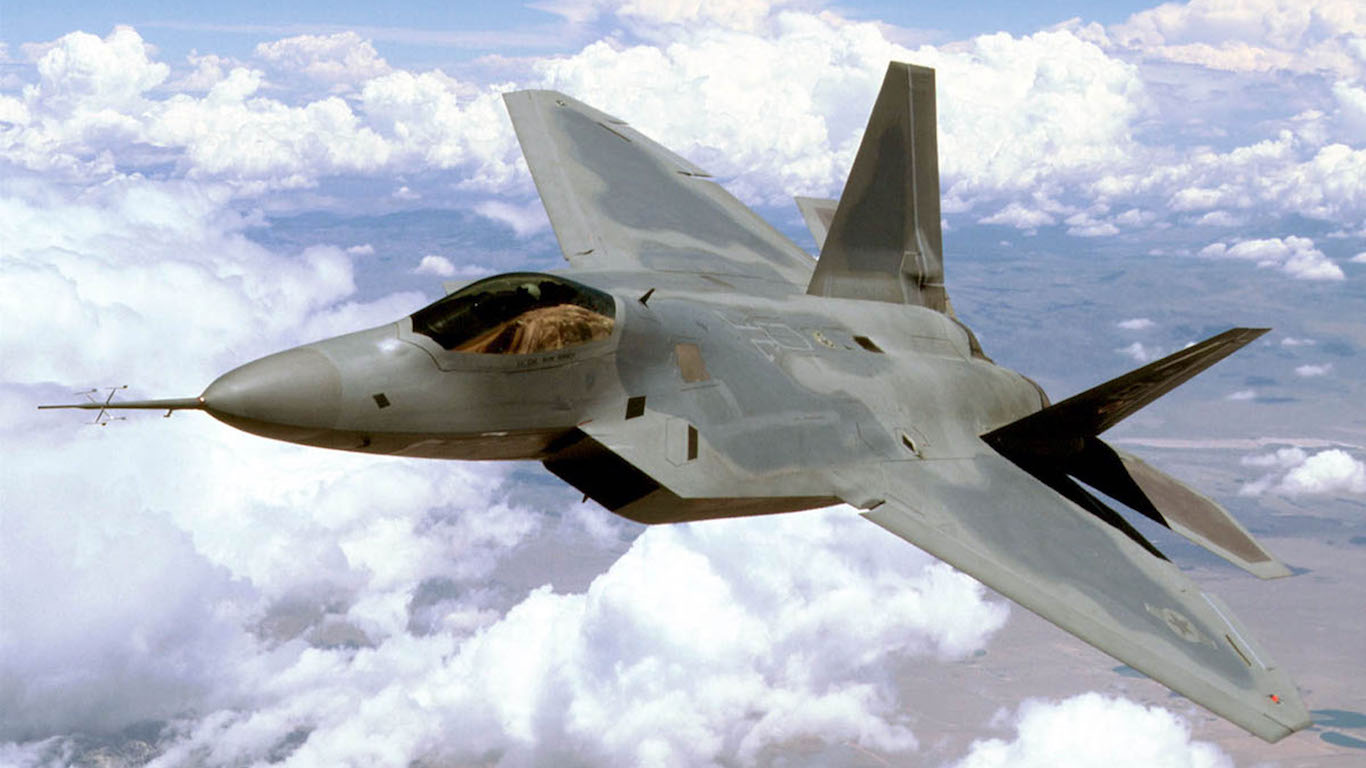Military
Defense Stocks Feel Pressure From Proposed Defense Payment Changes

Published:
Last Updated:

Thursday may have seen a record-breaking high for the Dow Jones Industrial Average and for the S&P 500. Just don’t bother telling that to the top defense companies with publicly traded equities. There appears to be an effort by the Department of Defense which would effectively lower reimbursements on projects under development via changing the system of progress and performance payments. Whether this will come to fruition remains unknown.
The Pentagon had suggested that the proposed change would lower customary progress payment rates for accepted cost reimbursements in contracts down to 50% from about 80%.
According to Dow Jones, the move could potentially put more of the risk on the defense companies. Their report also suggested that the industry groups pushing back are suggesting that, while the intent is to have lower out-of-pocket and wasted expenses, this could make weapons systems more expensive and could also cost jobs.
Inside Defense’s report noted that defense industry groups are pushing back on a Department of Defense plan which would reduce progress payments from an implementation of a 2017 issue inside the National Defense Authorization Act. They are calling it disruptive and out of line with congressional intent.
Changes of any sort around pricing have an impact on defense stocks. Thursday’s reactions were quite negative despite the Dow and S&P 500 hitting all-time highs. 24/7 Wall St. has shown basic trading data on each major defense contractor, as well as how this compares historically and against the Thomson Reuters consensus analyst price target.
Huntington Ingalls Industries Inc. (NYSE: HII) was last seen down 2.5% at $247.08 late on Thursday, and the shipbuilder’s market cap is almost $11 billion. Huntington Ingalls has a 52-week trading range of $201.91 to $276.69 and a consensus analyst target price of $265.19.
Lockheed Martin Corp. (NYSE: LMT) was down 2.5% at $330.90 late on Thursday. Lockheed Martin has a 52-week range of $291.52 to $363.00 and a consensus price target of $377.11. Its market cap is $93 billion.
L3 Technologies Inc. (NYSE: LLL) was last seen down 3.4% at $207.70. It has a 52-week range of $180.24 to $218.71 and a consensus price target of $244.80. L3’s market capitalization is $16 billion.
Northrop Grumman Corp. (NYSE: NOC) was last seen down 4% at $299.75 late in the day. Northrop Grumman has a 52-week range of $278.70 to $360.88, and a consensus price target of $360.44. The company’s market cap is $52 billion.
Raytheon Co. (NYSE: RTN) was trading down 2.9% at $199.20 late on Thursday. Raytheon has a market cap of $57 billion, with a 52-week range of $179.29 to $229.75 and a consensus price target of $237.17.
Boeing Co. (NYSE: BA) has defense exposure as well along with its aerospace and commercial aircraft business, but its price of $367.70 was still up about 0.7% even if its shares had challenged the $370.00 mark earlier. The more diversified company has a $211 billion market cap.
The iShares US Aerospace & Defense ETF (NYSE: ITA) was last seen down 1.07% at $213.55 late on Thursday, in a 52-week range of $176.14 to $218.79.
Before thinking the defense industry would be wiped out or even severely damaged here, note that the answers would indicate the opposite. Military.com noted that the U.S. military budget for fiscal year 2019 of $716 billion that was approved by Congress was an increase from President Trump’s $686.1 billion proposal presented earlier in the year.
Retirement planning doesn’t have to feel overwhelming. The key is finding expert guidance—and SmartAsset’s simple quiz makes it easier than ever for you to connect with a vetted financial advisor.
Here’s how it works:
Why wait? Start building the retirement you’ve always dreamed of. Click here to get started today!
Thank you for reading! Have some feedback for us?
Contact the 24/7 Wall St. editorial team.